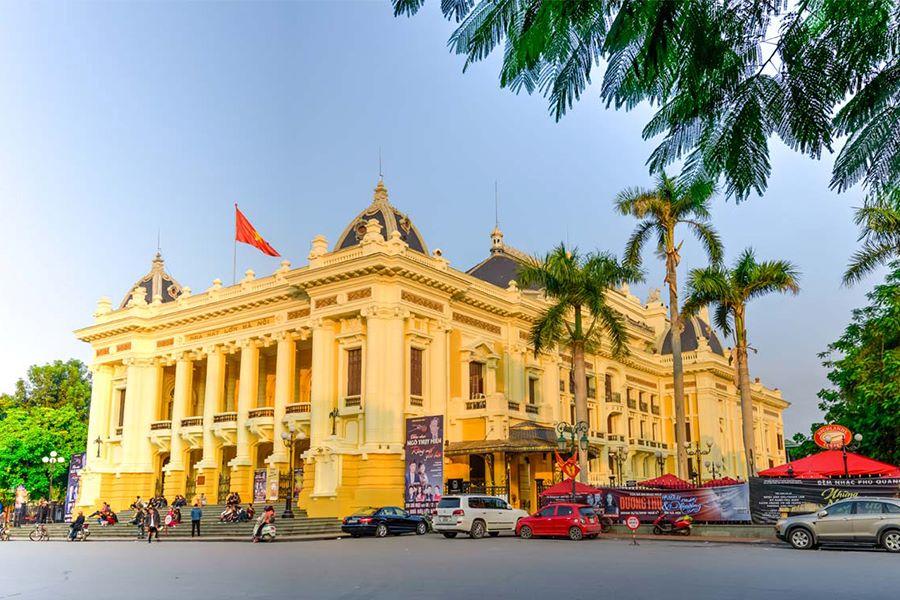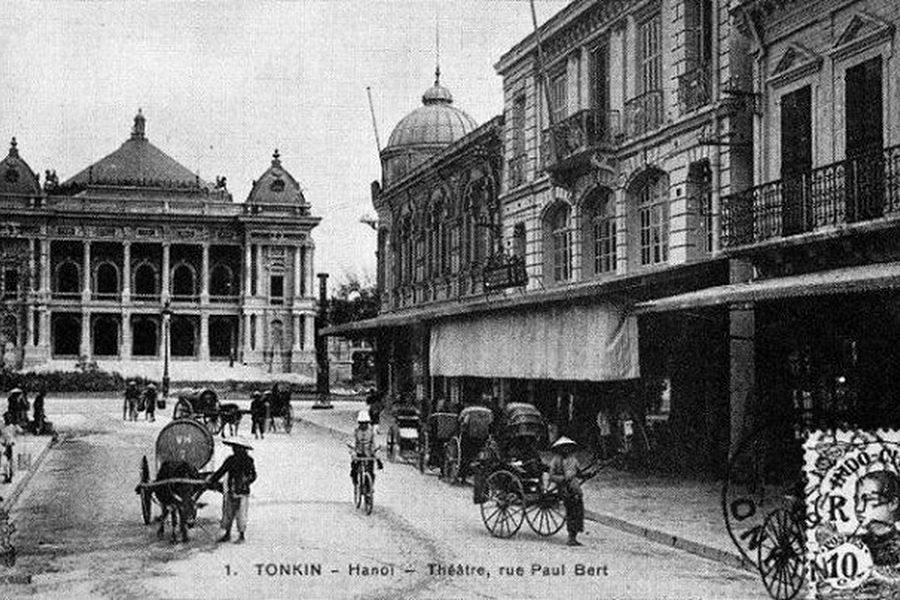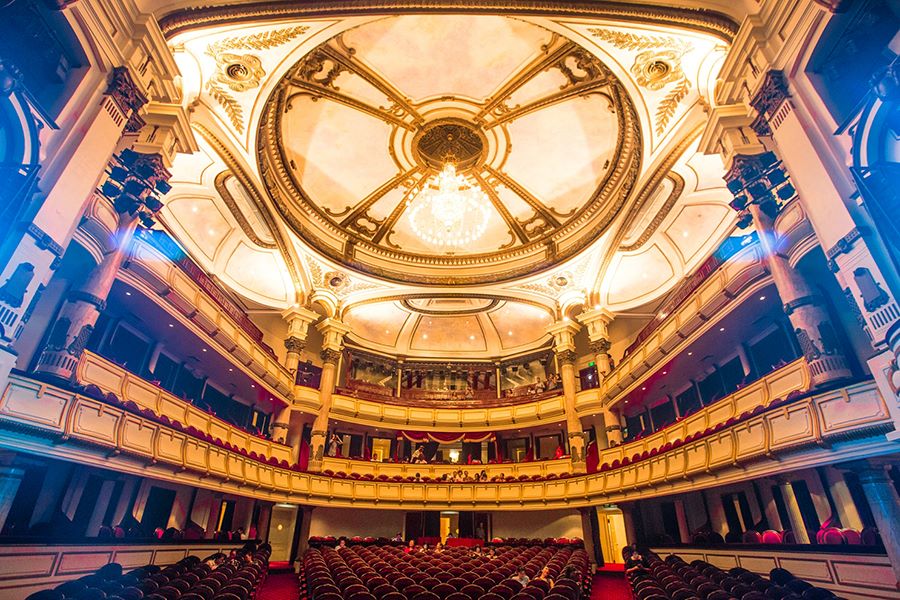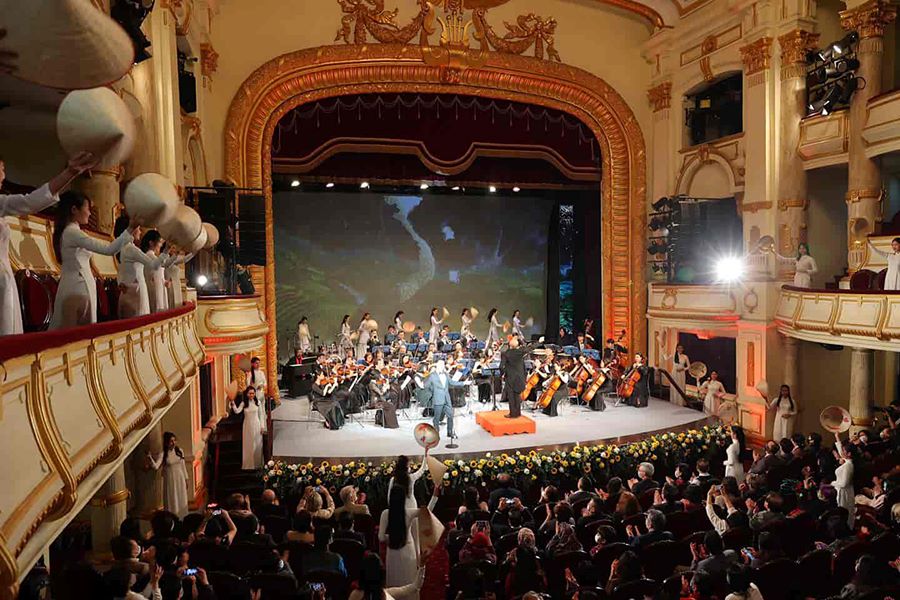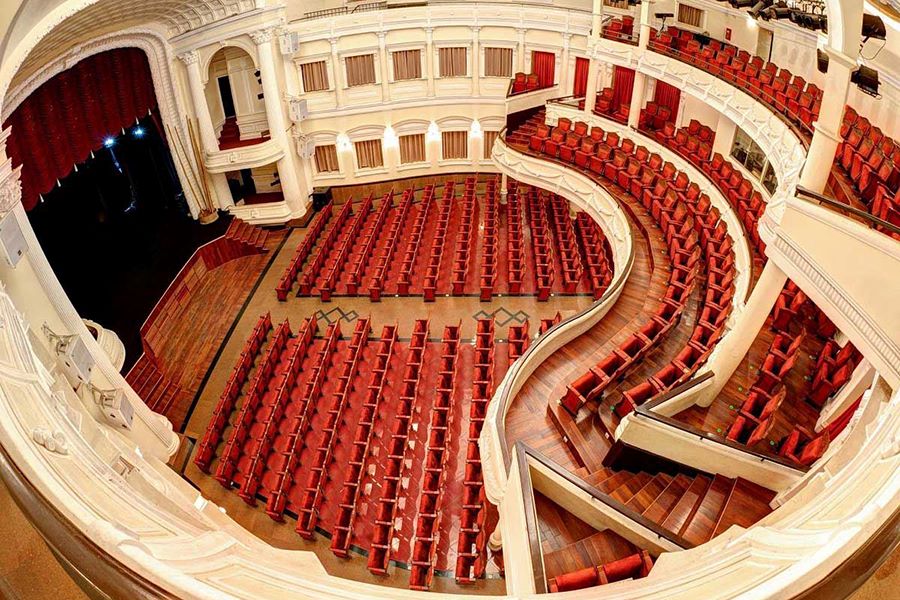There are numerous mysteries to discover within the Hanoi Opera House, a notable example of French architecture located in the Vietnamese capital. One of the things that foreign visitors to Vietnam worry about while making trip plans is a Hanoi itinerary. The Hanoi Opera House, which is perfectly situated in the heart of the city and boasts magnificent architecture, continues to hold the nation's most significant events. Examine its features and history before visiting the nation's capital to get ready for your Indochina trip.
Location of Hanoi Opera House
The Hanoi Opera House is situated next to Trang Tien Street, the Square of August Revolution, in the Hoan Kiem neighborhood of downtown Hanoi. The building is proof of the exchange of artistic and cultural ideas between Vietnamese and Westerners. It is a popular tourist site and has hosted a number of important cultural events.
The square in front of the opera house was built in the late 19th century. It was dubbed the August Revolution in honor of the momentous occasion in 1945. The National Museum of Vietnamese History, Hilton Hanoi Opera, and Sofitel Legend Metropole Hanoi are a few more prominent local architectural landmarks.
Hanoi Opera House History
The French government intended to establish a center for art and culture in Hanoi upon arriving in 1883 to meet their need for artistic expression. Thus, work on the Hanoi Opera House began in 1901 and was finished ten years later. Architects Boyer, V. Harley, and Francois Lagisquet created it as a scale model of Paris's Garnier Palace. As a result, the Opera House in Hanoi, which at the time was the most opulent academic art space in Indochina, has a classical European style.
Following the completion of the Opera House, the French arranged several ballet performances, musicals, and pantomimes to benefit the French community in this area and to acquaint Vietnamese people with French culture. Following 1945, the Hanoi Opera House served as a venue for several theatrical productions as well as meetings of the National Assembly and the government. Vietnamese artists used it as a performance space back then.
The Opera House was kept intact by the Vietnamese government even after the French left Hanoi in 1954. After eight decades, The Hanoi Opera House was in somewhat of a deteriorated state by the end of the twentieth century. The French Vietnamese architect Ho Thieu Tri was chosen by the Vietnamese government to oversee the renovations.
One of Vietnam's biggest opera houses today, the Hanoi Opera House has hosted several scholarly art exhibitions and is a popular tourist destination.
The Architecture of the Opera House in Hanoi
The Hanoi Opera House was built to host chamber music, theater, ballet, and opera, among other classical art forms. The performance hall, mirror chamber, and entrance hall comprise the three components of the Opera House. It has about 2,600 square meters of space in total. Classical chandeliers in the French style grace every room.
A T-shaped stairway that leads to the second story is located in the front hall, which is used to greet visitors. Here, the walls and columns are embellished with opulent classical patterns, while the floor is laid with stone tiles.
Located on the second level, the mirror chamber has played host to numerous significant occasions. This room's floor is tiled with imported Italian stones. Between doors and windows, large mirrors are erected, and crystal chandeliers are hung.
The Corinthian columns of the exquisitely crafted performance hall are painted in vibrant patterns. A massive chandelier made of crystal hangs in the center of the hall. With three stories of crimson velvet chairs, reminiscent of the 19th-century French classical style, the hall can accommodate 870 people. The performance hall provides the ideal environment for art, a harmonious fusion of light, sound, and color.
There are several rooms for administration and the library behind the theater, as well as rooms for makeup, costumes, and practice.
The Roman Ionic Order is followed in the arrangement of the pillars and stone-tiled roofs. The main entrance's dome and curved balconies are examples of early 17th-century Italian Baroque architecture. The Art Nouveau style is typified by the roof that spans two sides along the car entrance. A strong sense of an eclectic-based Neoclassical construction is created by all the features.
Hanoi Opera House Entrance Fee – Ticket Price – Shows
Hanoi Opera House opening hours
Mondays through Fridays are when the Hanoi Opera House is open for business. Nevertheless, contingent upon the configuration of the management board, it may remain open at other times. The allotted 1.5 hours for each visit, which falls between 10:30 am and 12 pm, should be sufficient for you to explore the area and snap pictures.
Hanoi Opera House's entrance fee
The Opera House in Hanoi offers two different tour packages:
Tour of the Opera House in Hanoi
- 20 persons max per visit
- 70 minutes per visit
- Price per person: VND 120,000 (about US$4.8).
- Days open for business are Monday through Sunday.
Tour & Exhibition at the Hanoi Opera House
- 250 persons max per visit
- 90 minutes per visit
- Price per person: VND 400,000
- Days of operation: Monday and Thursday
- Also, tickets for art exhibitions at the Opera House can be reserved for approximately VND 300,000 per person.
Hanoi Opera House Travel Guide
Make a note of the following advice so that you may easily visit the Hanoi Opera House:
- Before visiting the Hanoi Opera House, purchase tickets.
- During the show, put your phone on silent mode and avoid using any cameras.
- Remain silent throughout the performance.
- Don't bring food, gum, or smoke inside.
- You should arrive early because the Opera House will close fifteen minutes after the show begins.
There are plenty of enigmatic attractions for travelers to discover in Vietnam's capital, Hanoi. The Hanoi Opera House, in particular, is a priceless piece of the city's past with its French architecture. In addition to serving as a cultural hub for Hanoi, the opera house is a well-liked tourist attraction. Use the best advice listed above to ensure a wonderful trip.

